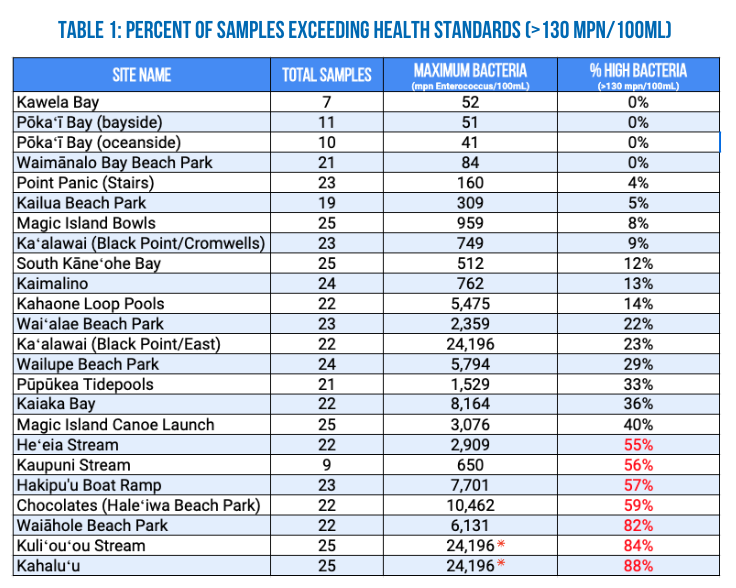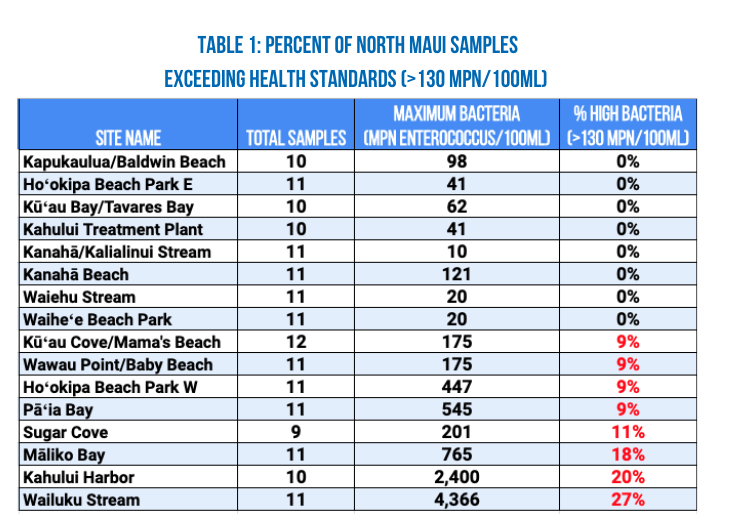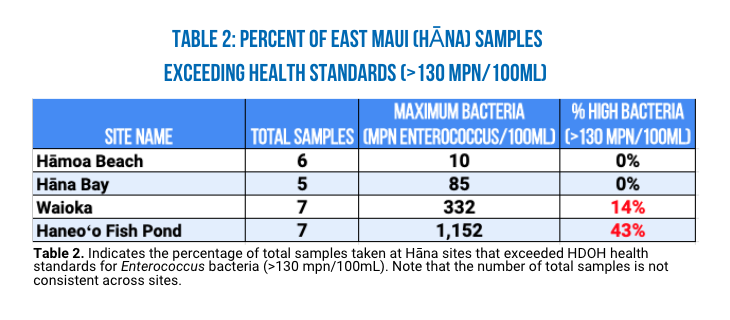
Blue Water Task Force Overview
The Blue Water Task Force (BWTF) is the Surfrider Foundation’s volunteer water quality monitoring program that provides critical information to protect public health at our beaches. Our annual reports summarize yearly water quality data collected from the islands of Oʻahu and Maui. Annual data from all islands (Oʻahu, Maui, and Kauaʻi) can be accessed here or on our online BWTF data portal.
Our BWTF Team is composed of trained volunteers who test samples for the presence of Enterococcus, a fecal bacteria that indicates the presence of human or animal waste in the water. Elevated levels of Enterococcus increase the likelihood that other pathogens that can make people sick may be present.
The goal of BWTF is to fill in monitoring gaps and quickly communicate with the public where it is safe to swim and where bacteria levels are elevated.
Water quality results are compared to the standards used by the Hawaiʻi Department of Health (HDOH) to make beach closure decisions. Known as the Beach Action Value (BAV), this threshold is set at 130 colony forming units of Enterococcus per 100mL sample (130 CFU/100mL).
The water quality information generated by the BWTF augments the data that the HDOH provides through its beach water quality monitoring program. HDOH services test only a specific number of beaches on Maui, primarily those with lifeguards and in popular tourist areas, while the BWTF covers a variety of areas popular with recreational users including surf spots and local bathing beaches.
Beachgoers should take precautions swimming, surfing, or recreating after heavy rain events for 24-48 hours. Do not enter brown water areas or where there is a warning sign for high bacteria levels.
Community members are encouraged to check water quality results before heading to the beach at bwtf.surfrider.org. Current and historic data are available.
2022 Oʻahu Results (Read Full Report)
Seven sites (Heʻeia Stream, Kaupuni Stream, Hakipuʻu Boat Ramp, Chocolates, Waiāhole Beach Park, Kuliʻouʻou Stream, Kahaluʻu) had 50% of their samples exceed state health standards. Five of these sites showed similarly high bacteria levels in 2021, while two new sites - Heʻeia Stream and Kaupuni Stream - measured consistently high bacteria readings this past year.
For the first time since 2018, the site "Chocolates" (Haleʻiwa Beach Park) did not have the highest percentage of samples to exceed bacteria readings. In 2022, 59% of the samples at Chocolates exceeded state standards compared to 95% of the samples in 2021.
Kahaluʻu is located in a Priority 2 Cesspool area, meaning that there is known wastewater contamination. Kahaluʻu, Hakipuʻu, and Waiāhole are furthermore all characterized by high concentrations of coastal cesspools. The chronic pollution documented at these sites by the BWTF indicates the potential impact of sewage pollution in these areas.
In addition, these seven sites are located at the mouth of streams or rivers. Chronic pollution at these sites may therefore also be attributed to land-based runoff from upland areas that is carried by freshwater streams and released into the ocean.
Cesspool derived water is also a known component of streams on Oʻahu and may contribute to elevated bacteria levels, particularly in areas where cesspools are concentrated along stream beds or coastlines.
In 2022, high bacteria spiked at various dates throughout the year. Some of these high bacteria readings coincided with heavy rain events, though others did not have a direct correlation with storms. For example, very high bacteria readings were recorded during July sampling at North Shore sites.

2022 Maui Results (Read Full Report)
In 2022, eight sites (Kūʻau Cove/Mamaʻs Beach, Wawau Point/Baby Beach, Hoʻokipa Beach Park West, Pāʻia Bay, Sugar Cove, Kahului Harbor, Wailuku Stream, and Māliko Bay) had at least one sample that exceeded state health standards. This was higher than in 2021 where five sites had at least one sample exceed.
Over the last two years, samples from Wailuku Stream, Māliko Bay, and Kahului Harbor have measured high bacteria levels that exceed the state health standard more frequently than the other sites tested. Kahului Harbor is located in an urban area and while the other two sites are located at the mouth of streams or rivers. Water quality conditions at these sites can likely be attributed to land- based runoff from upland areas that is carried by freshwater streams to the ocean.
Topping the list, for the second year in a row, is Wailuku Stream with 27% of samples exceeding health standards in 2022. This site also had the highest single bacteria reading last year of 4,366 Enterococcus mpn/100mL (the state standard is 130 mpn/100mL). The contributing watershed and nearby coastline has a particularly high concentration of cesspools.The chronic pollution documented by the BWTF at this site indicates the potential impact of sewage pollution.
2022 was the first year that water quality samples were collected in Hāna. Though sample size was limited, Haneoʻo Fish Pond had consistently high bacteria levels. It is likely that the fish pond has freshwater inputs & land-based sources of pollution contributing to high bacteria levels. Additional data from Hāna will allow us to develop a better understanding of water quality trends at these sites.


